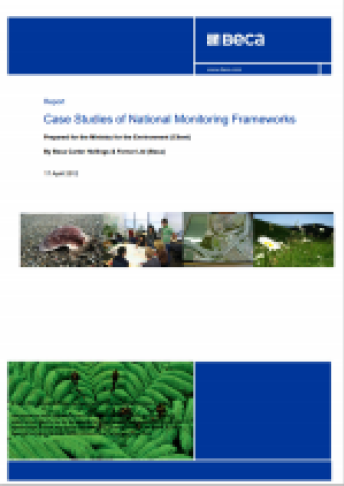The Case Studies of National Monitoring Frameworks was one of four studies undertaken as part of the RMA Monitoring and Review Project. Eight national monitoring frameworks within and outside New Zealand were reviewed to see where similarities can be drawn to the monitoring and review requirements for the RMA and to identify lessons learnt.
The Case Studies of National Monitoring Frameworks was one of four studies undertaken as part of the RMA Monitoring and Review Project. Eight national monitoring frameworks within and outside New Zealand were reviewed to see where similarities can be drawn to the monitoring and review requirements for the RMA and to identify lessons learnt.
The case studies cover the purpose (what is the legislation and context for the framework); process (how was the framework developed); output (what information is captured by the framework and how); and outcome (what can be learned from the development process and operation of the framework), and provide a summary of each framework’s effectiveness – its strengths and weaknesses.
Analysis from the case studies highlights recommended steps for designing a national monitoring framework for the RMA and key characteristics of a successful monitoring framework. These include:
Purpose
- Strong drivers – identify a clear need for monitoring and ensure the evaluation feeds back into the policy cycle
- Clear outcomes – be clear about what you want to achieve
Process
- Stakeholder engagement – involve those who will use the framework in its design
- Champions at high levels are required
- Use intervention logic – there should be a clear logic of how a measured output reflects an outcome
- Start small – with a few Specific, Measurable, Achievable, Realistic and Timely SMART indicators and build up over time
- Standardise data collection
- Keep existing systems and costs in mind
- Establish governance agreements
- Fund it
Output
- Content is fit for purpose
- It should generate useful information to inform action
A key finding of the report is that it is not possible to monitor every objective and outcome so there needs to be prioritisation of what is monitored. It also concludes that monitoring and evaluation will need to include both quantitative and qualitative measurement, because when assessing the effectiveness of the RMA precise measurement will be difficult.
Find out more on the Developing a national monitoring system for the RMA web page.
